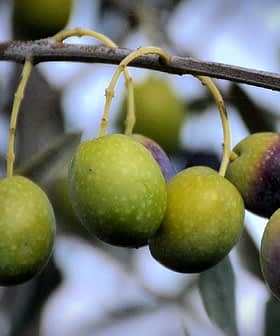Chemical Authentication Process Can Verify Olive Oil Origins
A three-year research project from Italy's University of Salento has yielded a new chemical imaging process that could certify the origins of olive oil blends.
With its widely extolled health benefits and beloved presence in dishes around the globe, extra virgin olive oil’s commercial heft is on the rise. But as the liquid gold of cooking increases in value, so does the risk of distributors diluting pure EVOO with refined seed oils — meaning your oil blend might not be exactly what its label says.
Currently, no official scientific process can certify the authenticity and geographic origins of a batch. And since 2009, when EU Regulation 182 mandated distributors in all European countries to label their olive oils with the olives’ geographical origin, the need for an official verification methodology has only become more urgent. But thanks to a three-year research project conducted by Francesco Paolo Fanizzi from the University of Salento in Lecce, Italy, a new chemical authentication procedure could provide a solution.
Southeast Italy’s Apulia region is the foremost EVOO producer in the country. It’s also the site of the University of Salento, where Fanizzi is a professor of general and inorganic chemistry. “Some years ago,” he said, “I realized that geographical origin assessment is a key factor to provide customers with a fully traceable product, and at the same time to improve the local economy.”
Over three years of research, Fanizzi developed a procedure that uses Nuclear Magnetic Resonance (NMR) to take images of EVOO samples from various regions of southern Italy. These images provide reference models, which can later be compared to EVOO blends to validate, or revoke, their authenticity.
Fanizzi compares the approach to taking an “olive oil fingerprint,” creating a snapshot of all the molecules contained in a sample of oil. This snapshot includes both the genetic factors (olive cultivars) and the external factors (such as soil and climate of a specific geographical area) where the oil originated. This data can be entered into reference databases, which can then be used to assess the origins of EVOOs.
The methodology’s future applications are promising. “There are commitments at national (Italy) and international levels for extensive use of these databases, but a huge amount of work is required for a comprehensive mapping of the most relevant cultivars and geographical areas where EVOOs originate,” said Fanizzi. “On the other hand, at the moment, we can easily put a sort of fence around a specific EVOO to buttress with a database the label-declared geographical area of production. We have several ongoing collaborations with companies, such as Certified Origins, aimed at this goal.”
As olive oil production becomes increasingly commercialized, the integration of sophisticated NMR authentication might seem like a departure from tradition. But it could ultimately safeguard the integrity of growers, suppliers, and consumers, ensuring that olive oil is held to the highest standard every step of the way. That’s as traditional as it gets.








